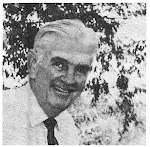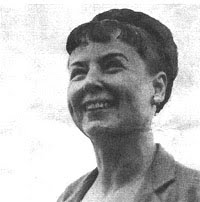Joan Hoffman “introduced” me this week to a Holling fan who is a noted illustrator and portrait artist in his own right in New Zealand. I sent a note to Harmen Hielkema asking if he would elaborate on the influence Holling’s book had on his you. Below is the miniature memoir he sent back to me. I hope you enjoy it as much as I have.
On my 7th birthday my grandfather, Henk Oostenrijk from the Netherlands, sent me a book voucher.
My mother and father took me to a bookstore in Auckland City where I chose Seabird, a beautiful, hard cover book for children written and illustrated by Holling Clancy Holling and published by Collins on the subject of Whaling. My mother dedicated the book for me by writing my birth date and my grandfather’s name on the flyleaf.
I no longer have that original copy. It was donated without my knowledge or approval to a local school fundraising book auction when my children were still attending primary school.
It did solve my father’s problem of what to give me for my 8th birthday. My obsession that year with Seabird gave him the cue. I received from him a copy of Paddle to the Sea. The following year it was Tree in the Trail.
Those three books changed my life forever. Long before I fully appreciated the literary contents of those books I was gazing in awe at Holling’s illustrations, many of which I copied. Not only that, I began to build my own canoes--models at first, and then on to the real thing.
Like Holling, I had a curiosity about many things and this lead to an interest in the canoes and the people of the Pacific Ocean. I was compelled to make sailing models of outrigger canoes, whittled out of the dry, woody flowering stems of the flax plant that flourishes in the coastal areas of New Zealand. My friends and I would send them racing across the bay and watch them diminish, longingly wondering where they might eventually end up, as they dwindled from sight; out to sea.
My first real canoe was designed by New Zealand designer, Frank Pelin, and built to his plans by my father and me. That canoe was a 15 foot, plywood, hard chine adaptation of an American Indian birch bark canoe. I named that canoe Seabird, and the canoe taught me about boat handling from a very young age. I used two types of paddle, the double Eskimo kayak style and the other the traditional single paddle. My friends and I cruised the sheltered local waterways north of Auckland where we fished and camped all summer long.
Again much influenced by Holling’s realist style and parallel to his path, I chose a career as a commercial graphic artist and mural painter, which eventually led to sculpture as well. These activities— though not my true passion—helped me to put food on the table for my family.
As I write this, I am now in my 50s and I still cherish and collect copies of Holling’s work. I haunt the children’s section of secondhand bookshops and charity shops always on the lookout for another, yet unseen Holling publication. In this way I have found a 1935 first edition of The Book of Indians, a later Collins republication of the same title, and a 1948 first edition Houghton Mifflin edition of Seabird.
My continuing curiosity about Holling lead me to Walt Giersbach’s blog which seeks to illuminate that which was previously unknown about the life and work of Holling C. Holling and his wife Lucille. Now, thanks to the efforts of people like Joan Hoffman of Michigan and others, details and artifacts from Holling’s life are being collected, displayed, recorded and published so that more may benefit from Holling’s rich legacy, the body of work that he left for our benefit and enjoyment.
Thanks, Holling C. Holling for daring to follow your dream and so influence the lives of people like me so far away here in New Zealand.
[More on Harmen Hielkema can be found on his Outrigger canoe blog, http://harmenhielkema.blogspot.com/. Harmen's Art blog is www.harmen.co.nz, and his Music blog is http://harmensmusicblog.blogspot.com/. He lives in Rawene Hokianga, Northland, New Zealand.]
Saturday, August 21, 2010
Subscribe to:
Comments (Atom)








